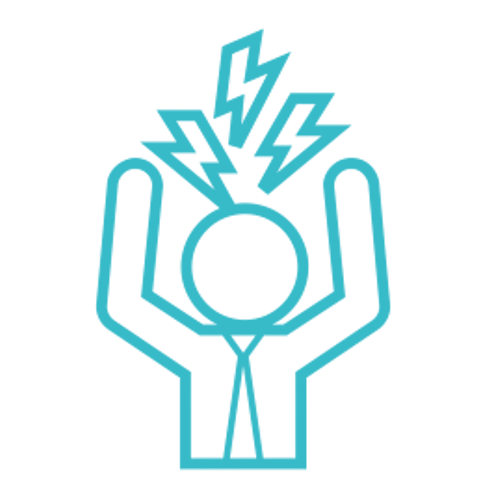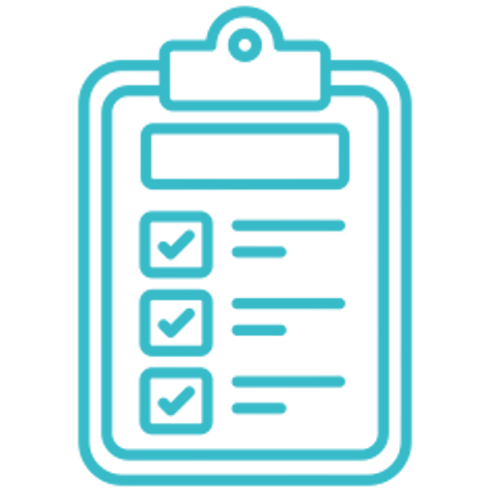In the hustle and bustle of our daily lives, it’s essential to pause and address a topic that often lingers in the shadows of our well-being—panic attacks. These sudden, intense bouts of anxiety can leave individuals feeling utterly overwhelmed and lost in a sea of fear. But understanding what panic attacks are, recognizing the signs when someone is in the midst of one, and knowing how to extend a helping hand can make a world of difference. In this blog, we’ll dive into the depths of panic attacks, shedding light on their nature, the telltale signs of someone going through one, and offering compassionate guidance on how you can be a pillar of support when they need it most.
What is a panic attack?
A panic attack is a sudden and intense episode of extreme anxiety or fear that can be overwhelming and distressing. These episodes typically come on abruptly and can last for a relatively short duration, typically ranging from a few minutes to around half an hour, although the experience can feel much longer to the person going through it.
13 Signs Someone is Having a Panic Attack
Recognizing the signs that someone is going through a panic attack is essential for providing them with the support and understanding they need. Here are some common signs to look out for:
- Rapid Breathing: Imagine feeling as though the air around you is thinning, and your lungs are struggling to keep up. The person experiencing rapid and shallow breathing is desperately trying to catch their breath. Their quick, shallow breaths or gasps for air are an instinctual response to the overwhelming sense of fear and anxiety that has engulfed them. It’s as if the world is closing in, and breathing becomes a lifeline. Practicing panic attack breathing exercises can help calm your breathing again.
- Increased Heart Rate: Their heart, like a drum in a thunderstorm, beats faster and harder. Clutching their chest is a natural reaction to the intense palpitations they’re experiencing. It’s as if their heart is racing towards an unknown finish line. Describing these sensations as a racing or pounding heart is their way of expressing the physical turmoil they’re enduring.
- Sweating: Excessive sweating is like an outward manifestation of the internal storm. Even in cool conditions, their body’s response to the panic is to produce sweat. Their skin may glisten with perspiration, and it might feel clammy to the touch. It’s as if their body is trying to cool down the emotional inferno within.
- Trembling or Shaking: Picture their body as a fragile leaf caught in a fierce wind. Trembling or shaking is an involuntary physical response to the overwhelming fear and anxiety coursing through their veins. It’s as if their body is trying to release some of the tension and energy that has built up. Panic attack breathing exercises can decrease physical symptoms like shaking as it slowly returns the body back to its normal state.
- Chest Discomfort: The feeling of chest pain or tightness can be likened to a vice tightening around their heart. It’s an alarming and distressing symptom that can lead them to believe they are having a heart attack. This misconception often prompts a visit to the emergency room, highlighting just how terrifying these episodes can be.
- Dizziness or Lightheadedness: Imagine standing on the edge of a cliff, feeling as though you might lose your footing and fall into an abyss. Feeling dizzy or lightheaded during a panic attack is akin to that sensation. It’s as if the ground beneath them is shifting, and they’re desperately trying to hold on.
- Nausea or Upset Stomach: Nausea and stomach discomfort are like turbulent waves in the sea of panic. They add to the overall discomfort and distress of the moment. It’s as if their body is sending signals of distress from multiple fronts.
- Feeling Detached or Unreal: This feeling of detachment from reality can be compared to watching a movie of their own life from a distance. It’s as though they’re observing themselves going through this terrifying experience from afar, and the world around them feels unreal and unfamiliar. Panic attack grounding techniques aid in the feeling of unreality that overtakes you when you need panic attack help.
- Fear of Losing Control: The fear of losing control, going crazy, or dying is a manifestation of their intense anxiety. It’s as if their thoughts are spiraling out of control, and they’re desperately trying to regain a sense of stability and sanity in the midst of the chaos.
- Tingling or Numbness: Tingling sensations or numbness in their extremities, like fingers and toes, can be likened to their body reacting to an electrical storm of emotions. It’s as if their nerves are on edge, sending erratic signals.
- Hot Flashes or Chills: The alternating sensations of intense heat and cold are like emotional weather patterns. It’s as if their body is caught in a tempest, and these sensations are a part of the turbulent ride.
- Verbal Expressions of Panic: When they say things like “I can’t breathe,” “I’m dying,” or “Something terrible is happening,” they’re attempting to verbalize the sheer terror they’re feeling. These words are their cry for help and understanding in the midst of the chaos. These expressions can be a cry for panic attack help.
- Seeking Escape: The strong desire to escape is their instinctual response to the overwhelming fear. It’s as if they’re desperately seeking a way out of the emotional hurricane that has engulfed them. Rushing out of a crowded place or seeking fresh air is their attempt to find relief from the storm. In the case that escaping is not an option, panic attack grounding techniques are a method of staying in the present and keep overwhelming feelings at bay.
How to Help Someone Having a Panic Attack
The big question is how to help someone having a panic attack. It’s not easy watching someone you care about go through a panic attack. Here are some practical and compassionate steps to support someone experiencing a panic attack:
- Stay Calm: When your friend is in the midst of a panic attack, the world can feel like a terrifying place. Their heart might be racing, their breath shallow, and their thoughts spiraling. In this storm of anxiety, your calm presence is like an anchor in the chaos. It’s not about having all the answers or being a superhero; it’s about being a steady, reassuring presence. Imagine you’re a lighthouse, guiding them safely through rough waters. Your serenity can help them feel less alone in their struggle.
- Create a Safe Space: Think of a panic attack as a sudden storm that your friend finds themselves caught in. To help them weather it, you need to find or create a safe harbor. This means finding a quiet, comfortable place where they can sit or lie down. Loud noises, bright lights, and crowds can all make the storm worse, so minimizing external stimuli is crucial. Your goal is to create a tranquil environment where they can regain their emotional footing.
- Encourage Deep Breathing: Panic attack breathing exercises are one way of calming down the body and mind. Picture this: Your friend’s breathing is fast and shallow, like a small boat being tossed by turbulent waves. You, as the calm and steady lighthouse, gently encourage them to anchor their breathing. Take slow, deep breaths with them if it helps. Inhale for a count of four, hold for four, and then exhale for four. This breathing exercise isn’t just about oxygen; it’s about helping them regain control over their body, one breath at a time.
- Offer Reassurance: In the midst of a panic attack, rational thought often goes overboard. It’s as if the storm has obscured the shore. Your role here is to be the guiding star. Let your friend know that you’re there, that they are safe, and that this too shall pass. Remind them that panic attacks, while incredibly distressing, are not life-threatening. You’re not there to minimize their experience but to provide a reassuring presence.
- Use Anxiety Grounding Techniques: Imagine that your friend is adrift in a sea of anxiety. Grounding techniques are like throwing them a lifebuoy. You can suggest asking them to describe five things they can see, four things they can touch, three things they can hear, two things they can smell, and one thing they can taste. These sensory exercises can help anchor them in the present moment and divert their attention from the panic. Panic attack grounding techniques help with anxiety as they try to help you focus on things aside from the distress.
- Be Patient: Remember, a panic attack isn’t a sprint; it’s a marathon. The duration can vary from person to person and even from one episode to the next. As their anchor, your role is to be patient. Don’t rush them or pressure them to ‘snap out of it.’ Let them take all the time they need to regain their emotional footing. Your presence is a constant, a beacon of support as they navigate the storm.
- Avoid Judgment: Your friend is already battling a tempest of emotions. They don’t need judgments or dismissive comments like “just relax” or “it’s all in your head.” Such words can feel like adding fuel to the fire. Instead, offer empathy and understanding. Remember, they’re going through a tough time, and your compassionate presence is far more valuable than any words.
- Offer Physical Comfort: Sometimes, a gentle touch on the shoulder or holding their hand can convey a sense of support and comfort like nothing else. However, always ask for their consent before touching them, as some individuals may not feel comfortable with physical contact during a panic attack. Your touch should be a lifeline, not an intrusion.
- Suggest Professional Help: If your friend frequently experiences panic attacks, consider suggesting seeking help from a mental health professional. Therapy and medications can be effective in managing panic disorder. Your role as a supportive friend is essential, but remember that you’re not a substitute for professional expertise. Seeking panic attack help is nothing to be hesitant about and can benefit you long term.
- Follow Up: Once the storm has passed and the skies begin to clear, don’t forget to check in on your friend. Let them know that you care and are available to talk or spend time with them if they need it. Sometimes, knowing someone is there for them can provide ongoing comfort. You’ve been their anchor, and your presence still matters even after the storm has passed.
Get help from a NYC anxiety therapist today!
How can we help someone having a panic attack? A panic attack can be a deeply distressing and disorienting experience, and your compassionate presence and assistance can make a significant difference in helping them navigate through it. Sometimes this can impact you too. If you or someone you know is experiencing anxiety or panic attacks, reach out to Uncover Mental Health Counseling. We have NYC anxiety specialists to provide you with the tools and support needed to navigate and conquer panic attacks. Here are some steps to get started:
- Reach Out to Uncover Mental Health Counseling: Start by reaching out to schedule a free 15 min consultation call. We’re here to listen, understand, and offer guidance.
- Connect with our Experienced Anxiety Therapists in NYC: Connect with one of our dedicated NYC anxiety therapists who specialize in managing panic attacks. Your initial session will provide you with a safe and confidential space to discuss your experiences and concerns.
- Regain Control: Our NYC anxiety therapists will help you understand the root causes of your panic attacks and equip you with effective strategies for managing and preventing them. Through therapy, you’ll learn invaluable techniques to regain control over your panic attacks. These strategies will empower you to face and cope with panic-inducing situations with confidence.






































